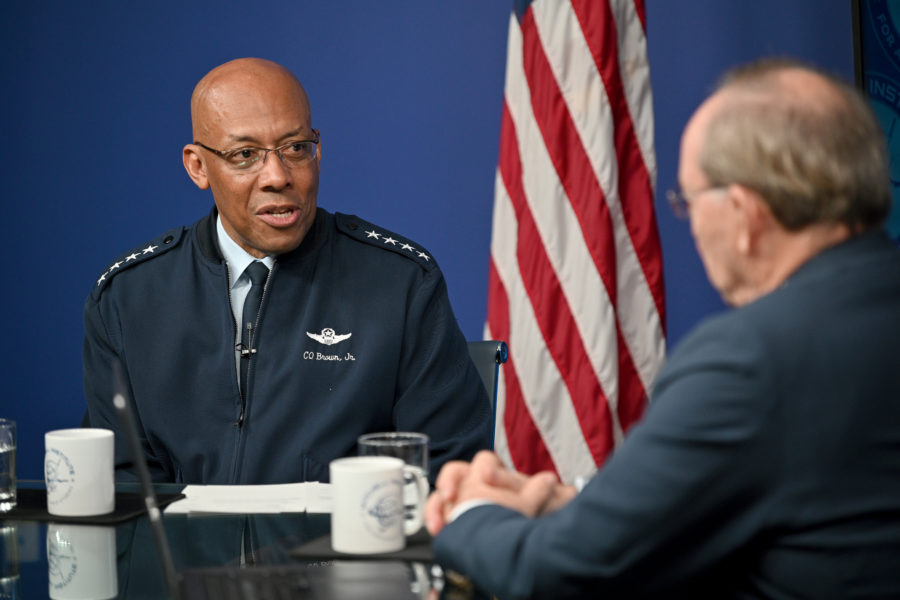When President Joe Biden announced his selection of Gen. Charles Q. Brown, Jr. to be Chairman of the Joint Chiefs of Staff, the commander-in-chief said the Air Force Chief of Staff was “unafraid to speak his mind as someone who will deliver an honest message that needs to be heard.” In his first public appearance since appearing with Biden at the White House two weeks ago, Brown provided an overview of what the president and the American people should expect.
“I am who I am,” Brown said June 7 during a Mitchell Institute for Aerospace Studies event. “I think about joint operations. I think about combat capability—how we will continue to push ourselves to ensure we have the capabilities to provide the nation what it asks us to do.”
Brown cautioned that the U.S. must align its strategic goals with how it deploys military assets and prevent unnecessary strain on America’s hardware and personnel.
“You can make a decision in a moment not realizing what the impact is going to be further down that line,” Brown said.
There is tension between the finite resources military services can provide and what combatant commanders want, Brown noted. The Air Force, as a service that can deploy assets across the world in hours, is at the forefront of that balancing act, as commanders weigh day-to-day demands against the practicalities of limited budgets and aging platforms.
“I’ve seen both sides of the coin,” Brown said, referring to his time as a “consumer” of resources.
Brown has experience being asked to provide airpower as the Air Force’s top general, as well asking for it, particularly during his time as the deputy commander of U.S. Central Command from 2016-2018 at a time America was engaged in an air campaign against ISIS, and as the leader of the air component for U.S. Indo-Pacific Command during his time as boss of Pacific Air Forces.
“I’ve also been thoughtful and pragmatic, particularly now that I’ve come in as the Chief,” Brown said.
Under Brown’s leadership, the Air Force has put together a new force generation concept. Brown and other Air Force leaders have said the service was particularly strained during America’s wars in the Middle East. Over two decades of nearly non-stop combat operations, aircraft and Airmen were worn down.
Brown said the force generation model has been able to “help us better articulate internally and externally” the Air Force’s capabilities and limits.
For the U.S., recognizing and balancing those capabilities and limits could prevent the military from overtasking itself. But Brown suggested it is also important for ensuring the Pentagon does not unnecessarily “ramp up and decrease deterrence” under the premise that any deployment is beneficial.
Routine American deployments have come under an increased spotlight lately, especially in the South China Sea, and led to close calls between American and Chinese assets, both at sea and in the air. While Brown did not directly address those interactions, recriminations over previously unremarkable movements have highlighted that countries may have pointed reactions U.S. military planners must consider.
“That is something that we’ve got to continue to work on and be strategic in how we execute,” Brown said. “As we look at deterrence, I do think about all our operations, activity, and investments, and how we do those a bit more holistically. To be able to say, just do more bomber missions into the Indo-Pacific, and that’s going to send the right message. Do we really understand that?”
Common sense can go a long way in forming military strategy, Brown noted.
“If you’re going to deter, you need to understand who you are deterring and what message you’re sending,” Brown said.

